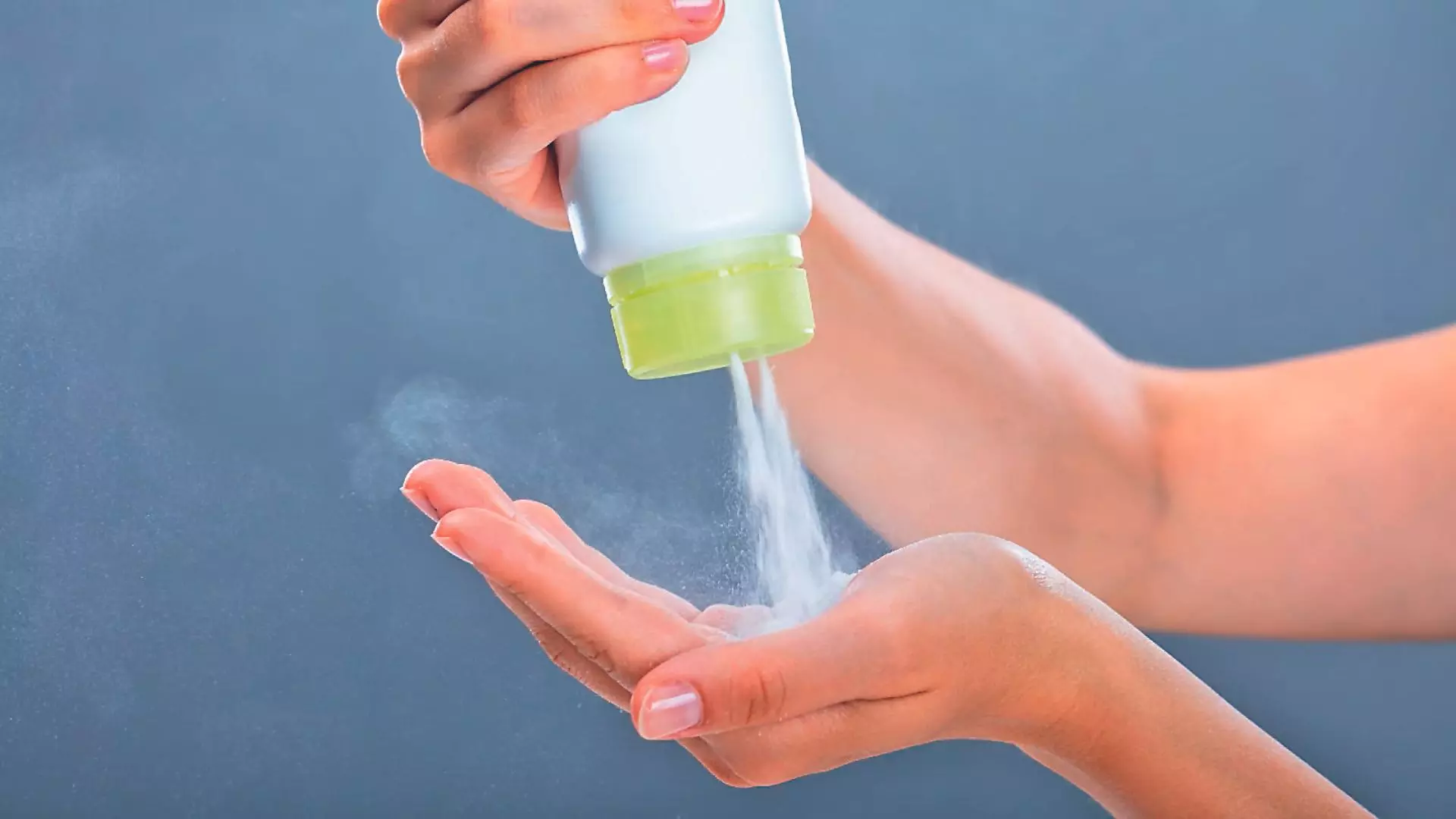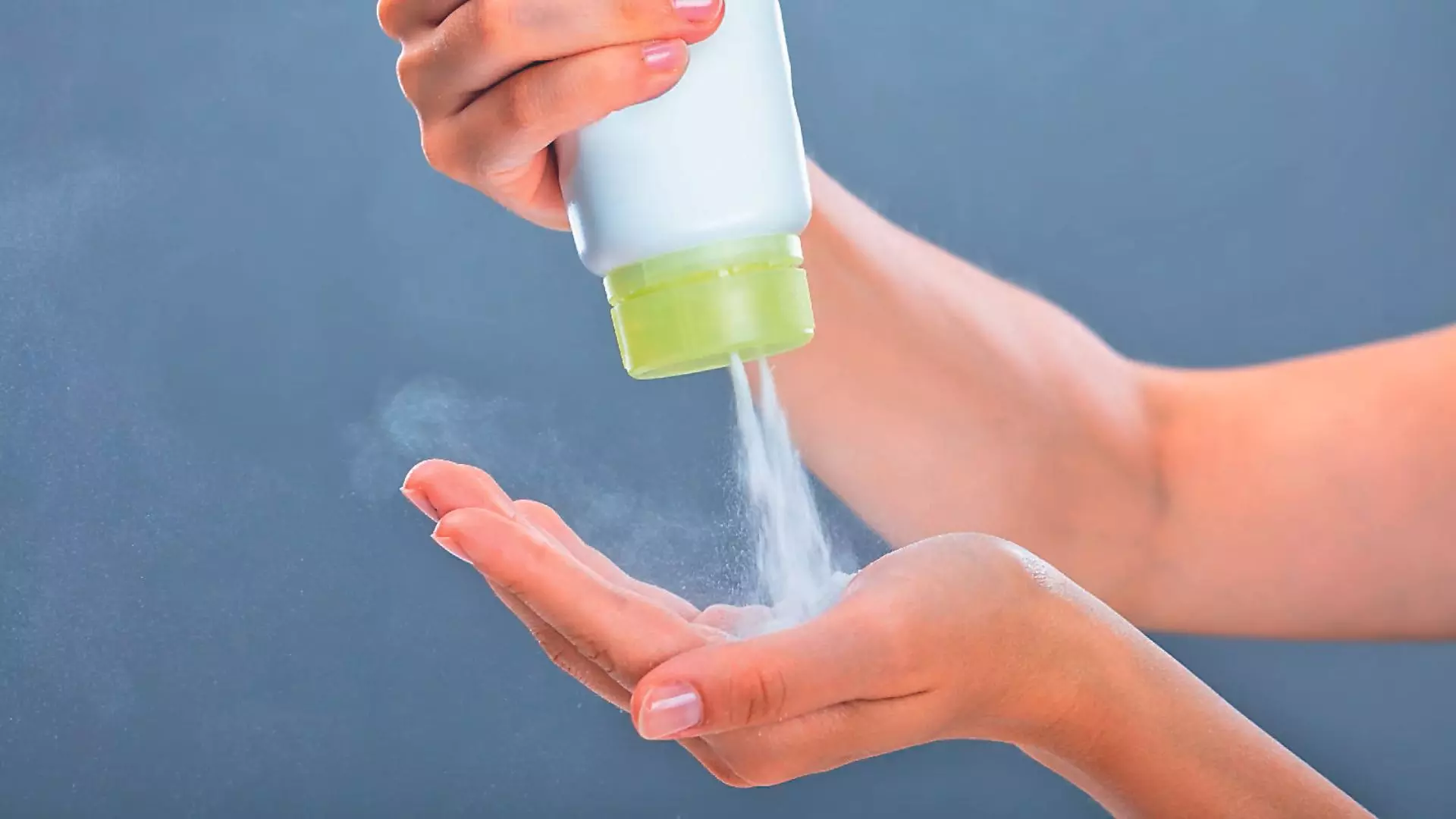
In hot and humid summers, when you rub a puff of talcum powder from your compact on your face, it lifts your mood immediately with its fragrance. When you pat the skin dry further, it feels plain. Additionally, spraying its stark white, snowy, amorphous particles on your body freshens you up. But did you know that this seemingly innocuous talc reportedly has carcinogenic elements in it that could induce ill effects on your health?
Deadly Talc
Talc has become a key ingredient in our makeup routine over time. Almost all cosmetics include an element of talc right from bronzer, blusher, eye shadow, foundation, mascara, lipstick, face and body powder to even dry shampoo because of its moisture-absorbing power and the ability to prevent makeup from getting cakey, thick and patchy. But talc reportedlycomprises traces of asbestos in it, which could cause cancerous mesothelioma and that’s worrying the medical community.
“The research is still ongoing in the area to discover whether talc contains asbestos-causing mesothelioma. Some studies found evidence of asbestos contamination in talc-based products, while others are yet to prove it. As a result, regulatory agencies such as the FDA (US Food and Drug Administration) evaluate the safety of talc-based products and the possible health hazards related to it,” informs noted cosmetologist Dr Manali Padhye of I2CAN, a premier Pune-based aesthetic medicine training institute.
The fear about talc containing asbestos stems from the fact that both minerals (talc is a clay mineral while asbestos, a fibrous one) can occur geologically together.
“While cosmetic-grade talc is required to be asbestos-free, cross-contamination can still happen during mining. Therefore, manufacturers are expected to implement rigorous testing and purification processes to ensure their products are safe. Consumers should stay informed and choose products from reputable brands that prioritise safety,” shares dermatologist Dr Mikki Singh, also the founder-director of Bodycraft salon and skin clinic.
According to skin specialist Dr Nishita Ranka, “In India, the Central Drugs Standard Control Organisation (CDSCO) plays a crucial role in regulating and guaranteeing the safety of cosmetic ingredients with certification. It is advisable for all talc makers to compulsorily adhere to stringent safety standards and comply with the precautionary guidelines to mitigate such challenges and protect consumers.”
Wicking Power & Less Pocket Pinch
“Talcum has a silky texture and an excellent ability to soak in moisture, making it particularly desirable for products designed to matt the skin. It is a cost-effective ingredient that makes it a lucrative choice for cosmetic manufacturers. Moreover, talc has been used in cosmetics for decades and is deeply rooted in the industry,” notes Dr Padhye. Reasonably, cosmetic manufacturers are reluctant to reformulate or remove talc from their product pipeline due to apprehensions about maintaining product efficacy and consumer satisfaction.
Apart from its excellent moisture absorption property, talc remains a prevalent and unique ingredient in cosmetics.
Baby Skin Scare
In recent times, a reputed babycare brand was accused of containing asbestos in its baby talcum powder. Could this harm an infant’s delicate skin in a big way if not detected at the right time?
“The presence of asbestos or lead in baby talcum powder raises an alarm, particularly for infants with delicate and sensitive skin. Prolonged exposure to these contaminants or any toxic pollutant can cause severe health issues, including respiratory problems and an increased risk of cancer,” cautions Dr Ranka.
Dr. Singh highlights that while “asbestos exposure can lead to serious respiratory issues and cancer, lead exposure can cause developmental and neurological problems.”
Talking about detrimental effects on infants’ health, Dr Padhye apprises that “lead is a toxic heavy metal, and its exposure can result in cognitive impairments, behavioural issues, and physical growth delays. Similarly, asbestos is linked to serious health conditions, including mesothelioma, lung cancer, and other respiratory illnesses among kids. The presence of asbestos in baby talcum powder could lead to a significant risk of inhalation and skin exposure, eventually inducing long-term health complications.”
More harmful:
Asbestos is a known carcinogen and its presence in talc-based products is linked to serious health conditions, such as lung cancer and mesothelioma.
Talc miners, industrial workers and even consumers who use talc-based products are at risk of inhaling asbestos fibres, especially if the talc used in these products is not asbestos-free.
While harsh chemicals in cosmetics can cause skin irritation, allergic reactions and other adverse effects, the carcinogenic risk of asbestos is far more severe.
Some natural and sustainable alternatives to talc include arrowroot powder, cornstarch, rice powder, mica, kaolin clay, plant-based ingredients and mineral makeup. These substances can offer similar benefits without the associated health risks.
Talc Talk:
In the humid summers and monsoons, talcum powder is essential for absorbing moisture, maintaining skin smoothness, and decreasing roughness.
If applied too much or not rinsed off, it can block skin pores and cause rashes or pimples.
Due to its capacity to absorb excess oil and moisture, talc helps oily skin stay matte and makeup fresh all day
